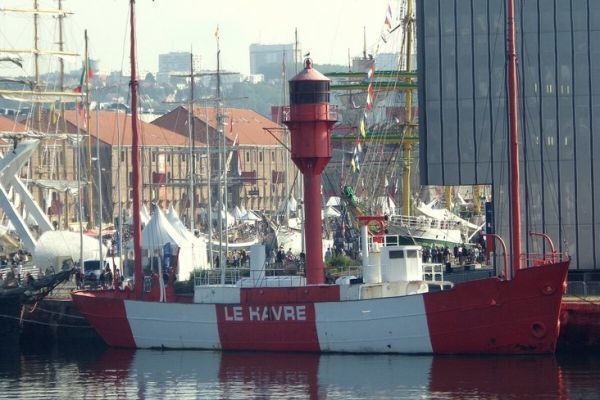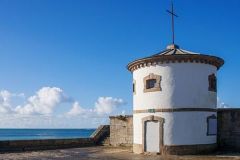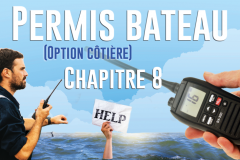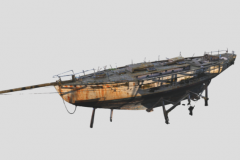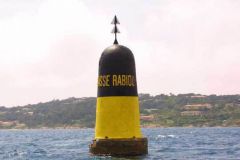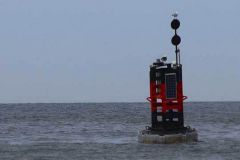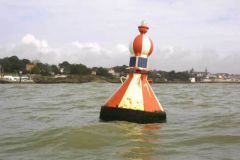Built in 1935 by Forges et Chantiers de la Méditerranée in Graville, the Dyck 35 was the first of a new generation of fireboats with wide hulls, flat bottoms and powerful engines. First moored off the coast of Dunkirk, she survived the Second World War and returned to Le Havre. Renamed Le Havre and recommissioned in 1950, she and her crew enjoyed a long career ensuring safety at sea until 1981, when she was decommissioned.
Fireboats ensure maritime safety
Fireboats, which complemented land-based lighthouses, had the essential mission of ensuring the safety of navigation. These floating vessels, equipped with a tubular mast bearing a lighthouse, were anchored near shoals at sea by means of a special anchor, thus signalling their presence to sailors. Some were also used to mark navigable channels. Their mode of operation varied, sometimes requiring a crew to maneuver them, while others were automated, operating in a similar way to buoys. Fireboats were deployed in many Northern European countries, as well as in North America. In France, the Service des Phares et Balises was inspired by English practice in designing these vessels.
Le Havre, one of the pioneering self-propelled vessels with optimum safety equipment
Le Havre is a unique fireboat. She was the first to be equipped with diesel engines coupled to alternators, enabling electric propulsion. This mobility meant that, unlike her predecessors, she did not have to rely on tugs. As soon as it was installed, under the name of Dyck 35, it was equipped with features demonstrating its commitment to ensuring optimum safety for sailors:
- a compressed-air fog siren consisting of 4 horns attached to a huge air tank serving as a regulator.
- an underwater sound transmitter consisting of a vibrator lowered by means of a mooring chain into a cylinder, passing through the height of the ship. The vibrations had a range of around 17 miles.
- a radio beacon, also known as a Hertzian lighthouse, emitting electric waves picked up by the ship's antenna.
- a weather station.
- a Fresnel lens with a range of 17 miles.
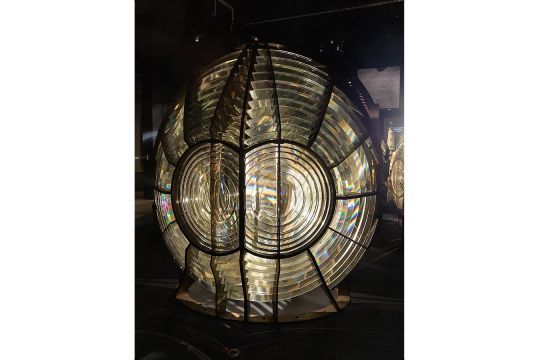
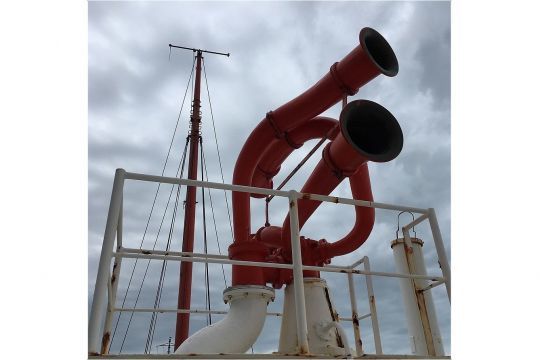
Two small diesel-dynamo generators, each rated at 10 kW, produced the power needed for on-board lighting, lighthouse operation and windlass windlass maneuvering. To enhance safety, all mechanical equipment was duplicated, and electric lighting was combined with a gas system. Because of the rolling motion, the lighthouse was fitted with a special dial-mounted device, with balancing counterweights to ensure horizontal projection at sea level.
On board, a crew of eight - a captain, a chief engineer, two oilers, a mate, two deckhands and a radio operator - worked twelve hours a day, and were relieved every fortnight. Their mission was to take weather readings every three hours, maintain the boat and ensure the proper operation of the signalling and radio equipment.
From warship to guardian of the sea
During the war in 1942, the Service des Phares et Balises sheltered the fireboat, but it was soon requisitioned by the Germans. The Dyck 35, painted in military colors, is used as an anti-aircraft battery. To increase manpower, the sail locker at the stern of the boat was converted into a crew quarters. At the end of the war, she was found stranded and abandoned in a canal near Ostend, in the Flemish region. The Service des Phares et Balises decided to dry-dock the vessel for overhaul and upgrading.
In 1948, the boat was assigned to the port of Le Havre. In 1949, a tug took charge of her from Dunkirk, and in 1950, she returned to Le Havre, where she took on her present name. It carries out its prevention and communication missions in tandem with another vessel. From 1970, Le Havre was repainted in red and white, like the other fireboats, to make it easier to spot at night. As well as serving as a signalling vessel, it also took readings for the French National Meteorological Administration. Throughout its period as a stationary vessel, it was operated by the Ponts et Chaussées lighthouse and beacon service, which ensured its smooth running. At the same time, it served as a workshop for the maintenance of automatic light buoys, before being decommissioned in 1981 and permanently replaced by an automatic light buoy.
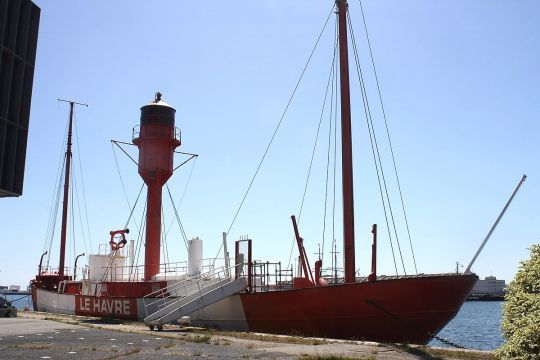
Saved from destruction
In 1986, the City of Le Havre acquired the vessel from the Phares et Balises department, acting to save it from the imminent threat of destruction. In a gesture of maritime heritage preservation, the City then transferred ownership of the vessel to the Maritime and Port Museum Association, which embarked on several restoration campaigns.
Le Havre is destined to become a centerpiece of the local maritime heritage. In 1999, during the Transat Jacques Vabre, it was illuminated to mark the entrance to the race village. In 2005, the City of Le Havre renewed its support for the association by contributing to a refit of the fireboat. The aim of this operation is to check the thickness of the metal sheets and the protection of the ship's hull, thus ensuring its presence in the next edition of the Transat Jacques Vabre.
Classified as a historic monument in 2017, this first self-propelled fireboat is now moored on the Quai Renaud in the port of Le Havre, bearing witness to a bygone era that marked the beginnings of safety at sea. Despite the virtual disappearance of their usefulness with the advent of automatic beacons and modern navigation technologies, these fireboats remain guardians of France's maritime heritage. At present, only four remain in the country. One of them, moored on the Seine in Paris, has been rehabilitated as a venue for alternative and underground music, known as the Batofar. Two others, the Scarweather in Douarnenez and the Sandettié in Dunkirk, can be visited, and finally, the Roquerols in Sète.
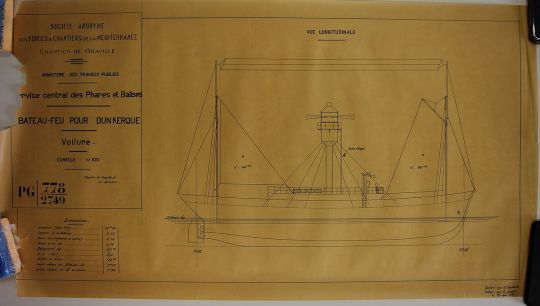
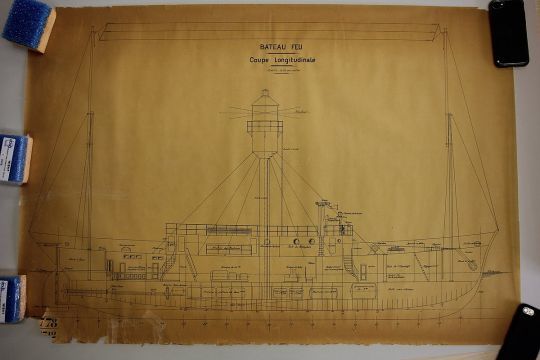
Technical data
- Length: 42.5 m
- Width: 6.90 m
- Width at waterline: 6.35 m
- Draft: 4.68 m
- Displacement: 770 tonnes
- Propulsion: Autonomous by 100 HP electric motor
- Motors: 2 Sulzer motors coupled to two 10 KW generators and 2 B.P. compressors
- Two umbrella anchors
- Two 300 m long chains
- Sail area: 154 m2
Interior fittings

 /
/ 